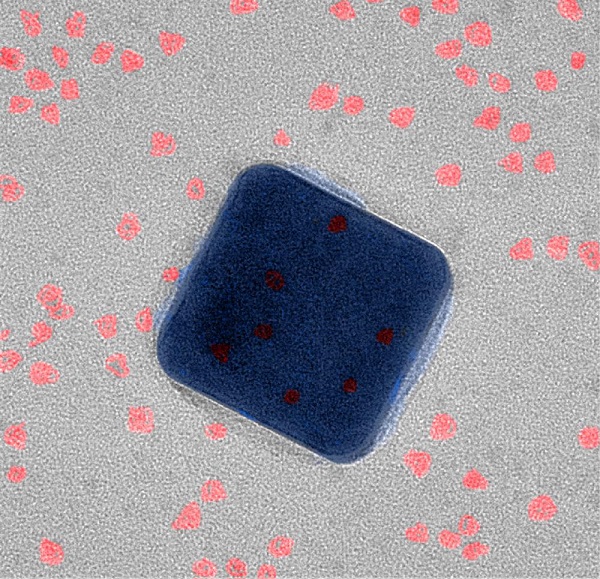Researchers from Duke University’s Pratt School of Engineering have created a device that enables semiconductor quantum dots to emit light at a rate of more than 90-gigahertz.
Should this technology prove scalable, it could one day see use in optical computing chips or for optical communication between electronic microchips.

“This is something that the scientific community has wanted to do for a long time,” said Maiken Mikkelsen, an assistant professor of electrical and computer engineering and physics at Duke. “We can now start to think about making fast-switching devices based on this research, so there's a lot of excitement about this demonstration.”
Here’s how it works: when a laser shines on the surface of a silver cube 75 nanometers wide, the free electrons on its surface oscillate together in a wave. These oscillations create their own light, which reacts with other nearby free electrons. The subsequent energy produced via this interaction actually gets trapped on the surface of the nanocube via this approach, and is referred to as “plasmon”.
Now, when a thin sheet of gold is placed at a distance of just 20 atoms away, the plasmon ends up creating a super-intense electromagnetic field between the silver nanocube and piece of gold. This field interacts well with quantum dots (spheres of semiconducting material about six nanometers wide), which the team sandwiched in between the nanocube and gold. When they did this, they discovered the dots produce a directional, efficient emission of photons that can be turned on and off at more than 90 gigahertz — roughly 90 billion times per second.

Nanoscale view of system — silver cube is just 75-nanometers wide, and the quantum dots (red) are sandwiched between the silver cube and a thin gold foil.
“There is great interest in replacing lasers with LEDs for short-distance optical communication, but these ideas have always been limited by the slow emission rate of fluorescent materials, lack of efficiency and inability to direct the photons,” said Gleb Akselrod, a postdoctoral research in Mikkelsen's laboratory. “Now we have made an important step towards solving these problems.”
“The eventual goal is to integrate our technology into a device that can be excited either optically or electrically,” said Thang Hoang, also a postdoctoral researcher in Mikkelsen's laboratory. “That's something that I think everyone, including funding agencies, is pushing pretty hard for.”
Immediately speaking, the team will now begin working towards figuring out how best to use the plasmonic structure they designed to create a single photon source by sandwiching a single quantum dot in the gap between the silver nanocube and gold foil. They’re also hoping to be a bit more exact in terms of orienting the quantum dots so as to create the fastest fluorescence rates possible.
“By tailoring the environment around a material, like we've done here with semiconductors, we can create new designer materials with almost any optical properties we desire,” said Mikkelsen. “And that's an emerging area that's fascinating to think about.”
The team’s work is detailed in the July 27 issue of Nature Communications under the title Ultrafast Spontaneous Emission Source Using Plasmonic Nanoantennas.
Via Duke University
Advertisement
Learn more about Electronic Products Magazine





